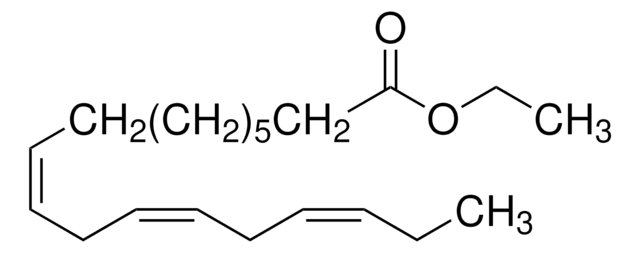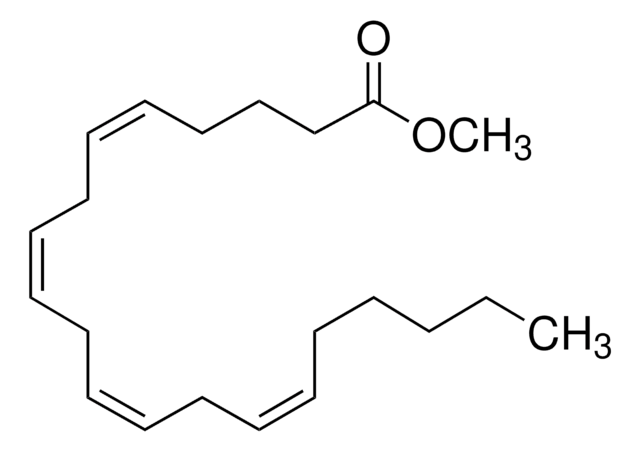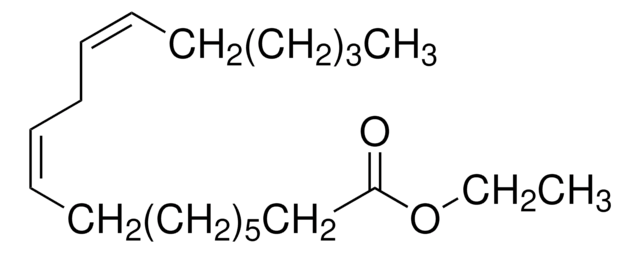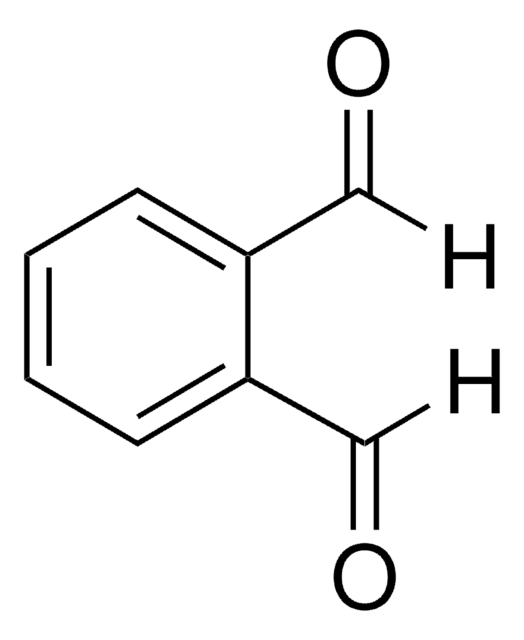A9135
Ethyl arachidonate
≥98.5% (GC), liquid
Sinonimo/i:
5,8,11,14-Eicosatetraenoic acid ethyl ester, Arachidonic acid ethyl ester
About This Item
Prodotti consigliati
Origine biologica
fungus
Livello qualitativo
Saggio
≥98.5% (GC)
Forma fisica
liquid
Gruppo funzionale
ester
Tipo di lipide
omega FAs
Condizioni di spedizione
ambient
Temperatura di conservazione
−20°C
Stringa SMILE
CCCCC\C=C/C\C=C/C\C=C/C\C=C/CCCC(=O)OCC
InChI
1S/C22H36O2/c1-3-5-6-7-8-9-10-11-12-13-14-15-16-17-18-19-20-21-22(23)24-4-2/h8-9,11-12,14-15,17-18H,3-7,10,13,16,19-21H2,1-2H3/b9-8-,12-11-,15-14-,18-17-
SNXPWYFWAZVIAU-GKFVBPDJSA-N
Cerchi prodotti simili? Visita Guida al confronto tra prodotti
Categorie correlate
Azioni biochim/fisiol
Confezionamento
Codice della classe di stoccaggio
10 - Combustible liquids
Classe di pericolosità dell'acqua (WGK)
WGK 3
Punto d’infiammabilità (°F)
Not applicable
Punto d’infiammabilità (°C)
Not applicable
Dispositivi di protezione individuale
Eyeshields, Gloves
Certificati d'analisi (COA)
Cerca il Certificati d'analisi (COA) digitando il numero di lotto/batch corrispondente. I numeri di lotto o di batch sono stampati sull'etichetta dei prodotti dopo la parola ‘Lotto’ o ‘Batch’.
Possiedi già questo prodotto?
I documenti relativi ai prodotti acquistati recentemente sono disponibili nell’Archivio dei documenti.
I clienti hanno visto anche
Il team dei nostri ricercatori vanta grande esperienza in tutte le aree della ricerca quali Life Science, scienza dei materiali, sintesi chimica, cromatografia, discipline analitiche, ecc..
Contatta l'Assistenza Tecnica.












